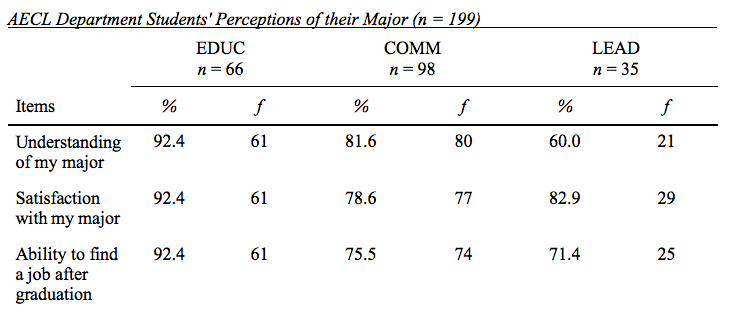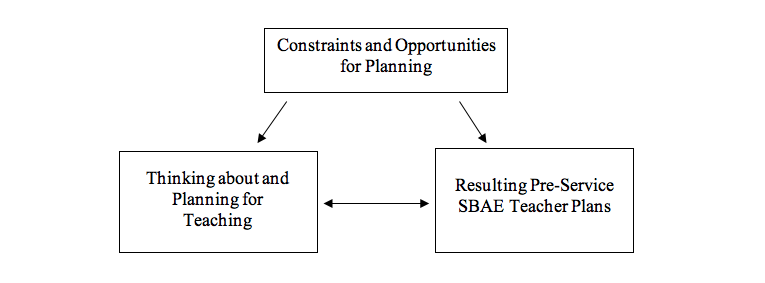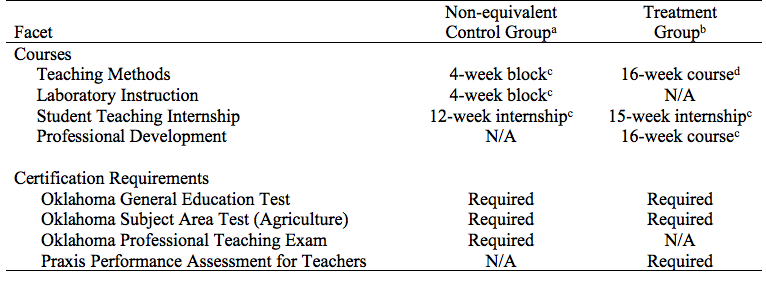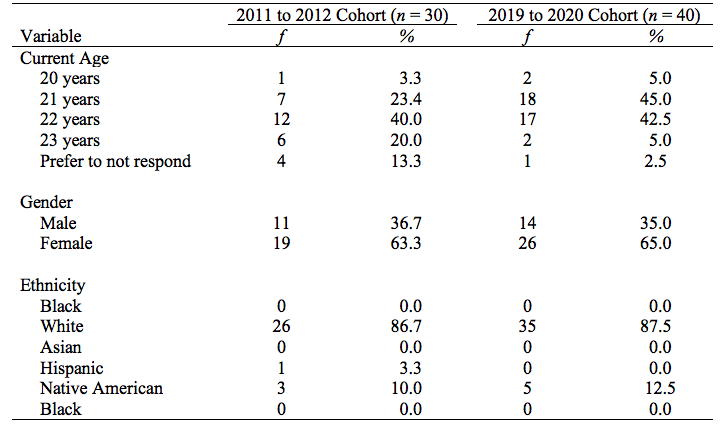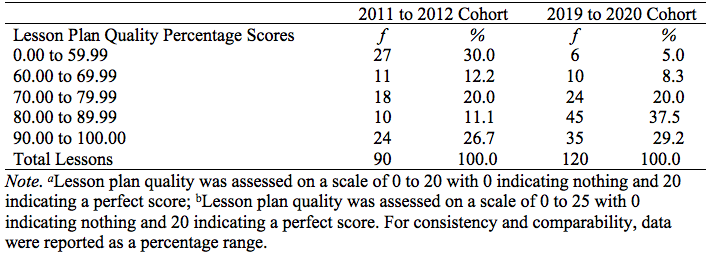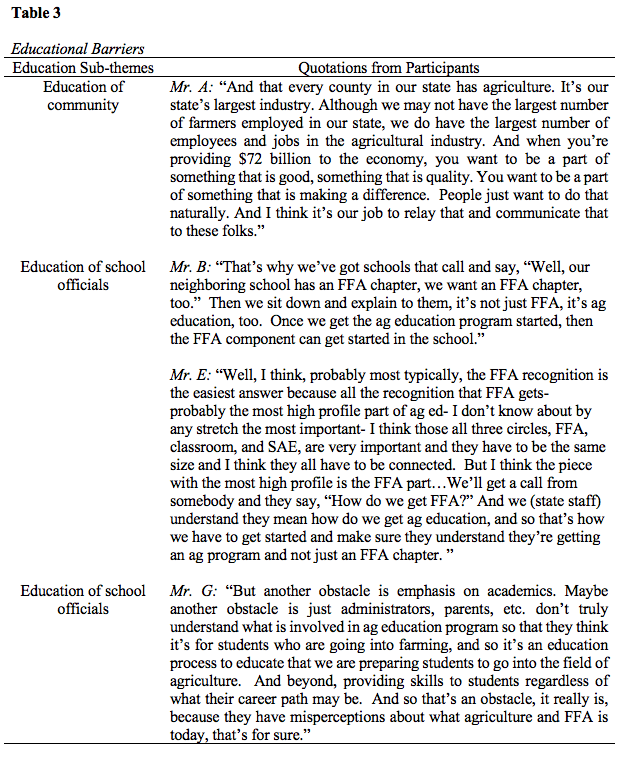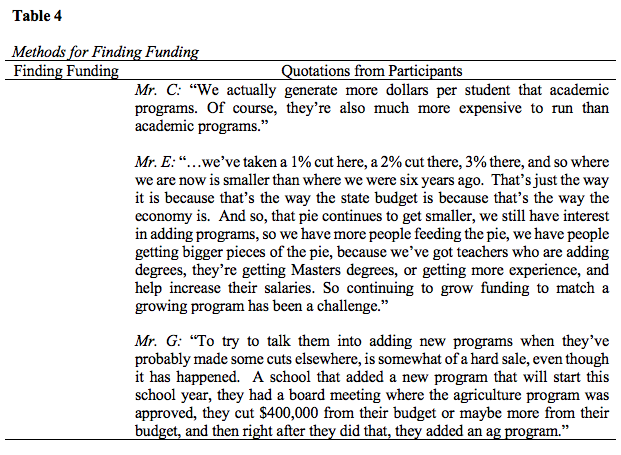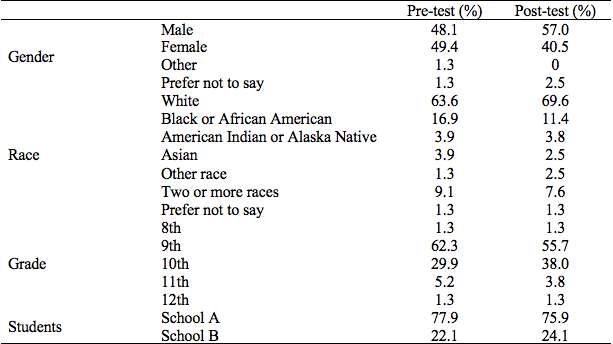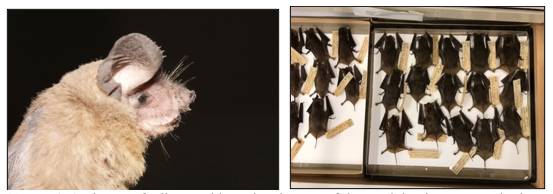Christina Garner, University of Georgia, christina.garner25@uga.edu
Kathleen D. Kelsey, University of Florida, kathleen.kelsey@ufl.edu
Abstract
Community gardens have been part of the American landscape for over 100 years. Recently, community gardens have been used to address food deserts and the obesity epidemic in the United States by increasing household access to fresh produce, physical activity, and social engagement. We report evaluation results from a community garden project located in a food desert in a Southeastern state. This particular county also had the highest rate of obesity in the state. Garden leaders described the impact of their gardening experiences on their well-being, access to fresh produce, and motivation to participate in the project. Well-being was enhanced through increased self-care and physical activity, reduced stress, a sense of contributing to others, and community cohesion. Garden leaders were motivated by opportunities to fulfill a request to participate, to teach others, to achieve self-fulfillment, to access fresh produce, and to try new recipes through Extension cooking classes. We recommend that local leaders adopt community gardens as a positive intervention to build cohesion and increase well-being among participants. Future research should focus on documenting the impact of community gardens on obesity and diabetes outcomes.
Introduction and Problem Statement
Community gardens have been part of the American landscape for well over 100 years. Their popularity has ebbed and flowed according to changing socioeconomic conditions such as war and economic stress. More recently, community gardens have been used to address food deserts and the obesity epidemic in the United States by increasing household access to fresh produce and engaging participants in more physical activity and social engagement (Draper & Freedman, 2010).
The United States Department of Agriculture (USDA) defined community gardens as “a plot of land, usually in urban areas that are rented by individuals or groups for private gardens or for the benefit of the people caring for the garden” (USDA, 2019, para 1). Community gardens are a reemerging trend in urban and rural landscapes because they enhance participants’ well-being through increased access to fresh produce, increased physical activity, and intergenerational and improved cross-cultural social engagement. Community gardens also contribute to social activism, urban beautification, green spaces, and agricultural and nutritional literacy. Well-placed community gardens help alleviate food deserts, as the food produced may be a conveniently available source of fresh produce for participants (Armstrong, 2000; Draper & Freedman, 2010; Loria, 2013; Ober Allen et al., 2008; Rupel, 2014; Twiss et al., 2003; Voluntad et al., 2004).
The evaluation study reported here was conducted in a small county in a Southeastern state with a population of 6,352. The county was classified as a food desert where 35% of the population lived in poverty and had the highest obesity rate in the state in 2019 (U.S. Census Bureau, 2019; USDA ERS, 2019a). To address these challenges land-grant university Extension agents received a grant from the Centers for Disease Control and Prevention in 2016 to: (a) increase access to healthier food options, (b) increase physical activity, and (c) improve communication of health-related activities among residences. After research and community assessments, Extension agents and community leaders determined raised-bed community gardens were an effective method for achieving the project goals.
This study addresses priority area six of the National Research Agenda for the American Association for Agricultural Education 2016 – 2020 (Roberts et al., 2016) by addressing research concerning vibrant, resilient communities with a particular focus on how agricultural programs impact communities and “appropriate models for engaging volunteers in the delivery of educational programs in agricultural and natural resources” (p. 51). In this article, we describe participants’ experiences and outcomes from participating in a community garden project.
Literature Review
History of and Justification for Community Gardens
The widespread use of community gardens in the U.S. emerged as relief for food shortages during World War II and were known as Victory Gardens (National WWII Museum, 2017). Approximately 40% of the fresh produce consumed in the U.S. was grown in one of the estimated two million Victory Gardens. Community gardens have been documented to benefit the well-being of individuals and communities by assisting vulnerable populations such as youth, the elderly, the homeless, and food insecure families by providing access to fresh produce, increased social interactions, increased physical activity, and agricultural and nutrition education (Twiss et al., 2003). In some communities, gardens have led to decreases in violence and improvements in social well-being through strengthened social cohesion (Bussell et al., 2017; Ober Allen et al., 2008).
Modern U.S. agricultural practices lead the world in efficiency and production, yet food insecurity affected 37.2 million Americans in 2018 (USDA ERS, 2019b). Food secure households were defined as having “access, at all times, to enough food for an active, healthy life for all household members” (USDA ERS, 2019b, para 2). Food insecure households are often located in food deserts or areas where access to fresh produce and meats are hampered by a lack of stores that sell these items or a lack of transportation to stores (USDA ERS, 2019a). Food insecure households also have higher than average rates of obesity as high calorie, low nutrient foods tend to be less expensive and more available than fresh produce and animal proteins (Bleasdale et al., 2011).
Health Benefits of Community Gardens
The World Health Organization (WHO, 1946, p. 1) defined health as a “state of complete physical, mental and social well-being and not merely the absence of disease or infirmity.” The Physical Activity Guidelines for Americans, published by the U.S. Department of Health and Human Services (2008) provided recommendations including “at least 150 minutes of moderate-intensity physical activity and muscle-strengthening exercises on two or more days each week.” Physical activity is defined as movement of the body that uses energy (USDA, 2015). Walking, gardening, climbing stairs, playing games, riding a bicycle, and dancing are all examples of physical activity.
Physical activity and exercise have frequently been reported as benefits of community gardens (Pate et al., 1995, Twiss et al., 2003, Wakefield et al., 2007). To describe the health benefits of a community garden, researchers include the physical, mental, nutritional, and social benefits received by participants. Community gardens offer the location and opportunity for increased physical activity and exercise. Wakefield et al. (2007, p. 100) reported that “the opportunity for physical activity that gardening presented was seen as beneficial to health, especially for the elderly.” Additionally, in a California Healthy Cities study (Twiss et al., 2003, p. 1,437), garden participants reported their physical activity increased 6% by increasing activity sessions from 4.9 to 5.2 times per week.
Mental health benefits have also been reported among community garden participants. The therapeutic landscapes allow participants to enjoy and connect with nature. “Horticultural therapy is a process through which plants, gardening activities, and the innate closeness we all feel toward nature are used as vehicles in professionally conducted programs of therapy and rehabilitation” (Davis, 1998, p. 3). Through community gardens participants often experience support, thus, increasing both psychological well-being and social well-being (Ober Allen, 2008). Positive well-being was not one of the intended goals for the gardens studied by Egli et al. (2016); however, the outcomes included an increase in well-being as a result of participating in community gardens.
Community gardens also increase access to fresh produce and contribute to community cohesion by bringing together intergenerational and cross-cultural community members for social interaction and labor sharing to produce food (Wakefield et al., 2007). Participants of a community garden project reported that their experience was “more than just planting seeds. It was about planting ideas, growing skills, and nurturing leadership and self-esteem in participants” (Voluntad et al., 2004, p. 1). Voluntad et al. (2004) also reported that the garden project was used to bridge the gap between Extension staff, seniors, and at-risk youth. Their reported approach gathered pertinent data regarding positive aspects of installing a community garden and shed light on the comradery that was built as an indirect result. To demonstrate the impact, one community garden participant in the Voluntad et al. (2004, p. 4) study said, “I would like to thank you for giving us the opportunity to be part of the community. Not only did I learn a lot about plants, I also learned how to give something back to the community.”
In summary, community gardens offer physical and mental health benefits by providing opportunities to eat fresh fruits and vegetables, engage in physical activity and skill building, create green space, beautify vacant lots, revitalize communities in industrial areas, decrease violence, and improve social well-being through strengthening social connections (CDC, 2010). Gardens also increased community cohesion and social networks among participants.
Purpose of the Study
The purpose of the study was to evaluate a community garden project in terms of participants’ well-being, access to fresh produce, community cohesion, and participants’ motivation to lead a garden site.
Methods
Evaluation research design was used to collect and analyze the data (Creswell & Poth, 2018), specially focusing on participant observation (DeWalt & DeWalt, 2011; Mack et al., 2005). All of the garden leaders (n = 11) were invited to participate in the study. Six leaders (55%) agreed to participate by sitting for an in-depth, face-to-face interview, providing food production data, and allowing for participant observation by the lead author. Participants’ names and research sites were changed to protect their privacy.
To increase trustworthiness, we chose a worthy topic to study, followed rigorous evaluation protocols, and were sincere in our efforts to collect and analyze the data. Our study is credible as the findings resonated with the participants through peer-debriefing sessions and provided a significant contribution to the garden leaders to better understand the impact of their efforts towards building community cohesion. We followed situational and procedural ethics as key markers of quality in qualitative research prescribed by Tracy (2010).
Interviews
The primary data source for this study was in-depth, face-to-face interviews. We developed an original semi-structured interview protocol based on the study purpose and conducted interviews with participants. The participants were selected because they volunteered to lead a community garden site. There were six garden sites with at least one garden leader at each site. Of the eleven individuals invited to participate, six accepted the invitation. There were several attempts to contact each garden site leader to ensure that they all had an opportunity to provide input. No incentives were offered to encourage participation.
One-on-one interviews were conducted with Rita and James. Pair interviews were conducted with Lee and Jake and Mike and Sara. The participants were granted the ability to select the interview time that worked best with their schedule. Interviews were conducted in November, 2018 at the county Extension office nearest to their community garden site. The interviews lasted between forty-five and sixty minutes. To create a welcoming atmosphere, refreshments were provided. The interviews were audio-recorded with permission from the participants.
The interview protocol focused on participants’ experiences with the gardens and outcomes resulting from the project. During the interviews, I followed the interview protocol and engaged in probing questions to further elaborate on responses. The interview atmosphere was relaxed and allowed for natural dialogue as I had established a working relationship with each of the participants.
The interview protocol included introductory questions that asked participants to describe their involvement in the community garden, the leadership structure of the garden, and how they became involved in the project. Personal impact questions were then asked regarding benefits received, dietary changes, and changes in activity levels as a result of participating in the garden. Community impact questions were asked to ascertain how they perceived the garden had effected the community in terms of cohesion. The interviews were concluded by asking participants to reflect upon their involvement in the gardens and what personal changes they had noted as a result of participating in the project.
Participant Observation
I used participant observation techniques to capture body language, comments, and physical behavior throughout the study. Observations took place in community settings that were relevant to the research questions. Participant observation can increase social trust and may inform the researcher about relevant cultural and economic contexts in the community in which the participants live. Building familiarity within the context of the research site allowed me to build a connection with participants and gain a deeper understanding of the behaviors and activities the participants describe during interviews (Mack et al., 2005).
As a participant observer, I conducted trainings with community members to teach them how to construct the garden beds and grow vegetables. The participants had training on data collection, harvest preparation, and food preservation methods. As the interviews approached, I prepared the participants by explaining the process of data collection and the purpose of the study, including informed consent. The interviews allowed for in depth conversations to provide rich information towards the effects of the community gardens while the observation data enabled me to examine how the project was implemented.
Researcher Reflexivity
My role in the community was as an Extension garden assistant through the AmeriCorps Volunteer in Service to America (VISTA) program. I assisted Extension agents and volunteers by piloting the garden project, conducting irrigation trials, and making plant selections for the gardens. I also created a demonstration garden allowing volunteers to observe the implementation of a garden and assisted the distribution team with sharing the produce with the community at harvest time. I worked alongside garden leaders, building trust and learning about their motives for volunteering, the vegetables they preferred to grow, and what changes they suggested for the garden project. I traveled to all of the garden sites, worked on various aspects of the gardens, and took detailed field notes related to the research questions.
My insider stance as a participant observer in the research process aided learning about the participants’ experiences from an emic perspective (Creswell & Poth, 2018), built trust with the garden leaders, and allowed me to observe and note how the program was implemented and concluded throughout the research cycle. My involvement increased the trustworthiness and reliability of the findings as my observations were used to triangulate the interview data and verify cultural norms within the research site (DeWalt & DeWalt, 2011).
Data Analysis
The participant observation notes were typed and coded according to a code book. The data was analyzed through latent content analysis method; determining the presence of certain words, themes, or concepts within the data (Babbie, 1992). Confirmability and trustworthiness was enhanced by taking detailed notes as well as comparing notes with other team members.
The interviews were guided by a semi-structured protocol, recorded, and transcribed verbatim. The transcripts were sent back to participants for member checking (Creswell & Poth, 2018). ATLIS.ti®, version 9.0 (2021), a computer-assisted qualitative data analysis software program, was used to open and free code the interviews for significant statements, which were then clustered into themes. The themes were synthesized to address the study purpose. Participants’ quotes were added to the findings to increase truth-value and add richness to the findings (Saldaña, 2015). Pseudonyms were used to protect participants’ privacy.
Data on the volume and type of food produced was collected by participants using a standardized form developed by the Extension program development coordinators. Descriptive statistics were used to report the size of the garden space and the amount and type of produce generated from each bed.
Research Sites
Extension agents, community leaders, and I constructed 30 raised-bed gardens in six different locations within the county. Community leaders were defined as those who were on the forefront of maintaining, harvesting, and recruiting volunteers for each of the garden sites. The raised-beds were approximately 8’ x 8’ for a total of 384 square feet of garden space per community. The total garden space constructed was 2,121 square feet (Table 1). Interested groups were required to submit an application to obtain garden materials. The six garden sites are described below.
County High School garden was led by the agricultural teacher and farmed by high school students enrolled in the agricultural education program. The produce was distributed to students and community members during the first year of production. Once established, the produce was more widely distributed within the community.
Charter Academy garden was led by the agricultural teacher and farmed by students enrolled in the agricultural education program. The teacher distributed produce to the school cafeteria. Extension agents and the school administration worked with the food service director to determine crops most beneficial to be cooked and served to students through the cafeteria.
Recreation Center garden was led by the director of the Boys and Girls Club and was farmed by adult volunteers. Extension agents assisted with a planting calendar, water recommendations, and insect control. The site served as a venue for after-school activities, including an outdoor classroom that was within walking distance to neighborhoods, allowing for community access to the garden and food distribution.
County Extension Office garden was led by the Extension agent and farmed by community members. This site was used as a demonstration garden for this project. The community was invited to learn about raised-bed construction techniques, irrigation systems, equipment, and planting suggestions.
County Commissioner’s Office garden was led by staff from the Commissioner’s office and farmed by volunteers. The location allowed community members to visit the garden, which generated dialogue regarding eating fresh produce and increasing physical activity. The produce was given to the community.
Boys and Girls Club garden was led by the club manager and farmed by youth in the program. The location was a successful outdoor learning space as well as a place for social gatherings.
Findings
All six participants reported having home gardens as children. Five participants worked full time, and one worked part time. Their average age was 40 years, with a range of 24 to 64 years. Two identified as women (Rita and Sara) and four as men (Jake, James, Lee, and Mike). Additional participant demographic characteristics can be found in Table 1.
Table 1
Participant Demographic Characteristics (N = 6)
| Name | Age | Vocation | Work full or part time | Garden Site | Sq. ft. of garden space |
| Rita | 58 | Local gov. staff | Full | Commissioner’s office | 256 |
| James | 64 | Nonprofit manager | Full | Boys and Girls Club | 384 |
| Lee | 24 | Ext. Agent | Full | Ext Office | 384 |
| Jake | 40 | Ag. Educator | Full | County High School | 384 |
| Mike | 54 | Ag. Educator | Full | Charter Academy | 384 |
| Sara | 41 | Nonprofit staff | Part | Rec. Center | 320 |
To address the goal of access to fresh produce, the volume of food produced is provided as a frame of reference. The gardens produced a total of 780 pounds of produce in 2018 (2.72 pounds per sq. ft.), including 188 pounds of broccoli, 78 pounds of cabbage, 201 pounds of collards, 28 pounds of eggplant, 30 pounds of mustard greens, 13 pounds of onions, 49 pounds of peppers, 40 pounds of rutabaga, 47 pounds of spinach, 44 pounds of Swiss chard, 12 pounds of tomatillos, and 50 pounds of turnips.
Themes
Five themes emerged from the data: (a) self-care, (b) increased physical activity, (c) reduced stress, (d) contribution to others, and (e) community collaboration.
Self-Care
All six participants reported that working in the gardens provided a therapeutic environment to reflect, enjoy, and focus on garden tasks, thereby creating a meditative experience. Rita said, “Mentally, it is my therapy to work in a garden” (1:8). Rita believed gardening improved her mental health by providing a relaxing environment to “get out and moving” (1:57).
Increased Activity
Rita and Mike reported that the gardens provided an opportunity to increase physical activity. Physical activity took the form of constructing the beds, preparing them for planting, weeding, cleaning out the beds after harvest, and watering. Jake said, “It’s really good exercise. Even better when you are cleaning them out and then planting and harvesting. You definitely break a sweat” (1:32). All six participants picked weeds or harvested on a daily or weekly basis, increasing their overall activity level. James noted that the gardens were located within walking distance to neighborhoods, providing a social gathering spot for adults and youth, especially in the summer.
Reduced Stress
Rita, Jake, Lee, and Mike reported that the gardens were in an easily accessible location outside of busy urban environments and helped to reduce daily stress. Sara said that the gardens provided “A little break from my desk” (1:66). Additionally, Sara, Rita, and Lee explained that the distraction of “pulling a few weeds or picking some stuff if they are ready” (1:67) allowed them to be more productive throughout the day.
Contribution to Others
Rita, Jake, Lee, and Sara reported that by being involved in the garden, they were able to provide food and support to others. Participants described delivering vegetables to the elderly, homeless, and low-income families. Sharing food grown in the community garden was particularly important in the teaching garden at the Extension office and the garden at the Boys and Girls Club. Youth maintained these gardens and donated food to those in need. James said, “It’s been a big plus for our organization” (1:44). All of the participants agreed that the gardens added community beautification by transforming previously unused lots into productive areas. The appearance of the gardens was a source of pride for the leaders.
Community Collaboration
Mike, Lee, Jake, Sara, and Rita reported that the gardens created an environment for collaboration among community members. The gardens were maintained by different groups of people who would not have interacted otherwise. Lee said, “Different gardens pull people from different areas in the county” (1:24), leading to networking among diverse community organizations. Sara said, “The different areas working together like the schools; the principals ask about the gardens, the city council members will be out there working…it’s just lots of different people, so I think it has strengthened those organizational ties” (1:70). Participants established friendships as “people stopped by the garden and started talking, learning, and asking questions” (Mike, 1:60). Jake said, “It’s the best thing our county has had in a long time” (1:92) as the garden increased social interaction among community members and provided fresh produce to vulnerable populations.
Motivation to Work in the Gardens
Participants were motivated to work in the garden because: (a) they were asked to participate, (b) for a teaching opportunity, (c) for self-fulfillment, (d) to access to fresh produce, and (e) for the opportunity to try new recipes. Each theme is discussed below.
Asked to Participate
Extension agents were the initial recruiters for garden leaders. They sought out gardeners through direct invitation. After being recruited by Extension agents, garden leaders recruited additional volunteers to participate in the project. Sara said, “I recruit people to come and work in the gardens, both kids and adults” (1:54). The participants had positive experiences with the garden, which led them to share their experiences with others.
Teaching Opportunity
The community gardens provided an environment for agricultural education at the school sites and a demonstration site at the Extension office. Mike was an agricultural education teacher. He reported that the gardens promoted positive peer interactions as well as strengthening youth-adult partnerships. He said that the gardens reinforced lessons on teamwork, food production, and food safety. Mike and Jake reported that the gardens were effective outdoor learning environments for experiential learning. Jake, an Extension agent, said, “I’ve done some education workshops out at the garden behind the Extension office” (1:28).
Self-Fulfillment
James and Rita’s motivation for participation was self-fulfillment and the enjoyment of seeing youth get excited about producing food. James said, “It is wonderful to see the kids go out there and actually pick produce and bring it in and cook it. Our kids like doing that” (1:58). Rita summed up her experience by saying, “I enjoy it! If you don’t enjoy it, you don’t do it!” (1:9).
Access to Fresh Produce
Access to fresh produce was a motivator for James, Jake, Lee and Rita. James said, “Fresh vegetables are the main benefit for me and the community” (1:41). “The benefits are worth the labor you have to put into the garden. It is rewarding in the end” (1:21) explained Lee. “I really enjoy it” (1:30) added Jake. All of the volunteers had first rights to the harvest; excess produce was then distributed to the community. All of the participants reported that the gardens provided more access to fresh produce and that they ate vegetables more frequently than before participating in the project. Rita continued to be involved because of the harvest. “I just let them get what they wanted, then I invite anybody and everybody to come get what they want” (1:3). Rita even went a step further to deliver food to those who were homebound.
Opportunity to Try New Recipes
As part of the project, Extension agents offered cooking classes to teach gardeners new recipes to use the produce from the garden. Sara said, “The Extension agents have done an outstanding job allowing the community to try different dishes other than just salads. It is very educational for me and several others” (1:65). Sara and Mike reported using many of the recipes designed for low-income households. Mike said, “I never imagined eating zucchini bread but we tried it” (1:64). The cooking classes also provided a social outlet for gardeners as a direct benefit of the garden project. Participants spent time “getting the vegetables and then researching a recipe that goes with them” (Mike, 1:63). Mike said, “The gardens have given community members access to fresh food and a place to exercise their body and minds and it needs to continue” (1:87).
Conclusions, Discussion, and Recommendations
The published literature described how community gardens fulfilled a variety of needs for diverse populations, especially youth, the elderly, and marginalized groups. Many authors have reported the benefits of community gardens including empowering gardeners to grow food for themselves and others, increasing participants’ social networks, and bridging community organizations (Armstrong, 2000; Bleasdale et al., 2011; Bussell et al., 2017; Draper & Freedman, 2010; Egli et al., 2016; Ober Allen et al., 2008; Rupel, 2014; Voluntad et al., 2004; Wakefield et al., 2007). Many of these same benefits were documented in this study.
Both physical and mental health benefits of community gardens have been well documented in previous research (Armstrong, 2000; Draper & Freedman, 2010; Ober Allen et al., 2008; Twiss et al., 2003; Wakefield et al., 2007). In this study, participants increased physical activity by building raised-beds, preparing them for planting, weeding, and harvesting. The six gardens provided a therapeutic environment for participants by providing a meditative experience and caring for others through food production.
Gardeners reported increasing their physical activity by walking to the gardens, weeding, harvesting, and maintaining the raised-beds. Being able to provide food to other community members was an important benefit as well. Our findings are consistent with Wakefield et al. (2007, p. 100) who reported, “community networks and social support were developed through the gardens.” Ober Allen et al. (2008) also found that community gardens enhanced nutrition while providing opportunities for interpersonal skill development and informal social control.
Motivation to participate in the garden project was based on being invited to participate by an Extension agent or other community leader, having an opportunity to teach others, self-fulfillment, access to fresh produce, and learning about new ways to cook vegetables. Voluntad et al. (2004, p. 1) stressed that “community gardens were about planting ideas, growing skills, nurturing leadership, and self-esteem” as added benefits. Giving food to others helped the recipients, as well as the giver, by increasing a sense of community cohesion.
The practical implications of the study demonstrate that community gardens can satisfy many social benefits by promoting well-being and social cohesion in a variety of settings. Because of the compelling and overwhelming evidence presented in the published literature of such benefits, it is recommended that community leaders adopt community gardens as a positive innovation to build community cohesion and increase well-being among participants.
Because the majority of published literature is qualitative with small populations, future research should focus on collecting empirical evidence on public health outcomes among gardeners as a result of community gardens. This evaluation study was undertaken by an AmeriCorps VISTA whose efforts contributed to the overall success of the project. Follow-up studies should examine how the gardens were maintained in the absence such support to determine if the gains documented here were sustained over time.
This study was limited by a small sample size (N = 6) and should not be generalized to other populations. Only garden leaders were interviewed. While they had extensive knowledge of the other gardeners and local neighborhood environments, they may have overstated benefits of gardening on behalf of non-study participants. Land access issues (who owns the land and gardeners’ rights to access) were not addressed in this study, which has served as a barrier to implementing successful community gardens in other studies. Extension agents must address land access as they plan for community gardens (Armstrong, 2000; Wakefield et al., 2007).
References
Armstrong, D. (2000). A survey of community gardens in upstate New York: Implications for health promotion and community development. Health & Place, 6(4), 319-327. https://doi.org/10.1016/s1353-8292(00)00013-7
ATLAS.ti (2021). A computer-assisted qualitative data analysis software (CAQDAS). Scientific Software Development GmbH. https://atlasti.com/
Babbie, E. R. (1992). The practice of social research. Wadsworth Publishing Company.
Bleasdale, T., Crouch, C., & Harlan, S. L. (2011). Community gardening in disadvantaged neighborhoods in Phoenix, Arizona: Aligning programs with perceptions. Journal of Agriculture, Food Systems, and Community Development, 1(3), 99-114. https://doi.org/10.5304/jafscd.2011.013.007
Bussell, M. R., Bliesner, J., & Pezzoli, K. (2017). University of California pursues rooted research with a nonprofit, links the many benefits of community gardens: A study of eight San Diego county community gardens demonstrates their role in gardeners’ health and wellbeing and community development. California Agriculture, 71(3), 139147. https://doi.org/10.3733/ca.2017a0029
Centers for Disease Control and Prevention. (2016). Nutrition. http://www.cdc.gov/nutrition/
Creswell, J. W., & Poth, C. N. (2018). Qualitative inquiry and research design: Choosing among five approaches (4th Ed). Sage Publications.
Davis, S. (1998). Development of the profession of horticultural therapy. In S. P. Simson & M. C. Straus (Eds.), Horticulture as therapy: Principles and practice (pp. 318). The Haworth Press, Inc.
DeWalt, K. M., & DeWalt, B. R. (2011). Participant observation: A guide for fieldworkers. (2nd ed.). AltaMire Press.
Draper, C., & Freedman, D. (2010). Review and analysis of the benefits, purposes, and motivations associated with community gardening in the United States. Journal of Community Practice, 18(4), 458492. https://doi.org//10.1080/10705422.2010.519682
Egli, V., Oliver, M., & Tautolo, E. (2016). The development of a model of community garden benefits to wellbeing. Preventive Medicine Reports, 3, 348352. https://doi.org/10.1016/j.pmedr.2016.04.005
Loria, K. (2013). Community garden information systems: Analyzing and strengthening community-based resource sharing networks. Journal of Extension, 51(2), 2FEA6. https://www.joe.org/joe/2013april/a6.php
Mack, N., Woodsong, C., MacQueen, K. M., Guest, G., & Namey, E. (2005). Qualitative research methods: A data collector’s field guide. Family Health International. https://www.intrec.info/Training%20material/Qualitative%20methods/Literature/1.%20fieldguide.pdf
National WWII Museum. (2017). UGA Extension: Introduction to Victory Gardens. http://extension.uga.edu/content/dam/extension/programs-and-services/school-gardens/documents/5-Historical-Victory-Garden-and-WWII.pdf
Ober Allen, J., Alaimo, K., Elam, D., & Perry, E. (2008). Growing vegetables and values: Benefits of neighborhood-based community gardens for youth development and nutrition. Journal of Hunger & Environmental Nutrition, 3(4), 418439. https://doi.org/10.1080/19320240802529169
Pate R. R., Pratt, M., Blair, S. N., Haskell, W. L., Macera, C. A., Bouchard, C., Buchner, D., Ettinger, W., Heath, G. W., King, A. C., et al. (1995). Physical activity and public health. A recommendation from the Centers for Disease Control and Prevention and the American College of Sports Medicine. JAMA, 273(5), 402-407. https://doi.org/10.1001/jama.273.5.402
Roberts, T. G., Harder, A., & Brashears, M. T. (Eds). (2016). American Association for Agricultural Education national research agenda: 2016-2020. Gainesville, FL: Department of Agricultural Education and Communication.
Rupel, R. A. (2014). Growing community by growing food: A comparative study of two community gardens in north Texas. (Master’s Thesis). University of Texas at Arlington. UMI: 1572610
Saldaña, J. (2015). The coding manual for qualitative researchers. Sage Publications.
Tracy, S. J. (2010). Qualitative quality: Eight “Big-Tent” criteria for excellent qualitative research. Qualitative Inquiry, 16(10), 837-851. https://doi.org/10.1177/1077800410383121
Twiss, J., Dickinson, J., Duma, S., Kleinman, T., Paulsen, H., & Rilveria, L. (2003). Community gardens: Lessons learned from California healthy cities and communities. American Journal of Public Health, 93(9), 14351438. https://doi.org/10.2105/ajph.93.9.1435
United States Census Bureau. (2019). State and county quick facts. https://www.census.gov/
United States Department of Agriculture. (2019). National agricultural library. https://www.nal.usda.gov/afsic/community-gardening
United States Department of Agriculture; Economic Research Service. (2019a). Documentation. https://www.ers.usda.gov/data-products/food-access-research-atlas/documentation/
United States Department of Agriculture; Economic Research Service. (2019b). Key statistics & graphics. https://www.ers.usda.gov/topics/food-nutrition-assistance/food-security-in-the-us/key-statistics-graphics.aspx#foodsecure
U.S. Department of Health and Human Services (2008). 2008 Physical activity guidelines for Americans. https://health.gov/sites/default/files/2019-09/paguide.pdf
Voluntad, A., Dawson, P., & Corp, M. (2004). The Pendleton community garden project – more than just planting seeds. Journal of Extension, 42(6), 6IAW2. https://www.joe.org/joe/2004december/iw2.php
Wakefield, S., Yeudall, F., Taron, C., Reynolds, J., & Skinner, A. (2007). Growing urban health: Community gardening in South-East Toronto. Health Promotion International, 22(2), 92101. https://doi.org//10.1093/heapro/dam001
World Health Organization. (1946) Constitution of the World Health Organization. Geneva: World Health Organization. https://www.who.int/governance/eb/who_constitution_en.pdf
